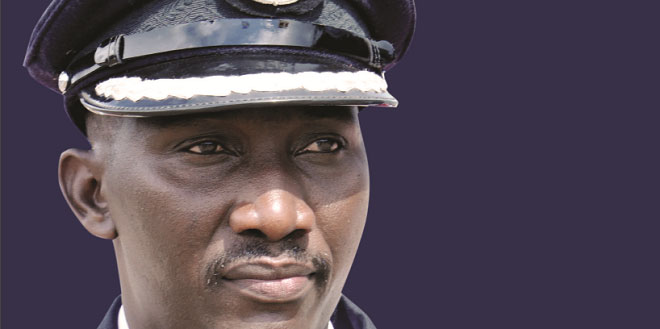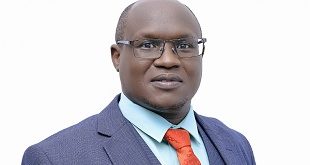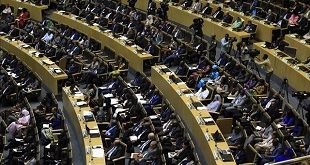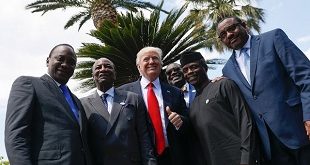
Kampala, Uganda | THE INDEPENDENT | The June 08 killing of then-Arua Municipality MP and NRM stalwart, Col. Abrahim Abiriga on June 08 in Kawanda near Kampala brought back memories of some killings believed to be assassination that have happened in Uganda. Below are some of them.
1. Brig. Pierino Okoya – 1970
Brig. Pierino Okoya was a young army officer who rose through the ranks to become deputy army commander in the first government of President Milton Obote. At the time of his assassination, he was also the commander of the Second Infantry Brigade based in Masaka. He travelled to Gulu on a personal errand on January 23, 1970. It was a tense period. In December 1969, Obote had survived an assassination which was said to be engineered by then army commander Idi Amin, who was Okoya’s boss. In the heavily tribalised army, Okoya – an Acholi, was seen as a bitter rival to Amin and likely to succeed him.
Amidst all this, on the evening of January 25, Okoya made a brief visit to the Air Force Officers Mess in Gulu where he had a conversation with the Base Commander Capt. Smuts Guweddeko, who was very close to Amin. A few hours later, Okoya was shot dead with his wife at their home in Gulu, a few kilometres away from the army barracks. Following the killing, two inquiries were instituted; one by the army and one by police. Both probes heavily implicated Amin. But Capt. Smuts Guweddeko and another officer were jailed over it in Luzira prison. His murder remains unresolved but is believed to have marked a crucial juncture in post-independence Uganda as his boss, then army commander Maj. Gen. Idi Amin, is said to plotted it as a forerunner for his coup against Obote a year later in 1971. Amin released the two officers and promoted them whereas those behind the inquiries that implicated him were killed.
2. Chief Justice Benedicto Kiwanuka – 1972
Benedicto Kagimu Mugumba Kiwanuka was the first prime minister of Uganda (March 01 – April 30, 1962). He was 40 years old at the time. New elections were held in April 1962 and the Uganda Peoples Congress (UPC) party of Milton Obote allied with the Kabaka Yekka party of Baganda loyalist to Kabaka Edward Mutesa II to defeat Kiwanuka’s Democratic Party. The contest has sometimes been described as a tussle between Catholics represented by Kiwanuka and DP and Protestants represented by Obote and Buganda and favoured by the British. When Obote was shot in an assassination attempt in 1969, Kiwanuka was suspected to have organised it and Obote imprisoned him in 1969. Two years later in 1971, then Army Commander, Maj. Gen. Idi Amin toppled Obote in a military coup. He immediately freed Kiwanuka from Luzira Prison and appointed him chief justice on June 27, 1971. Soon, however, Kiwanuka became known as a critic of Amin’s disregard of the rule of law and brutality. His ambition and fearlessness made him a target in then-president Idi Amin’s reign of terror and on September 21, 1972 he was picked his office at the High Court chambers in Kampala by state agents. He was reportedly shot dead by Amin at State Lodge Nakasero. His remains have never been located. His murder resulted into international condemnation of Amin’s regime and led to more fear and anarchy locally as several critical people were killed and many others fled into exile. Among the many honours of the former Chief Justice is a street in Kampala named after him.
3. Janani Luwum (1977)
Then-Archbishop of the Metropolitan Province of Uganda, Rwanda, Burundi and Boga (in Zaire), Janani Jakaliya Luwum, was killed in Kampala on February 16 or 17, 1977. Luwum, who was very highly respected internationally, was very critical of Amin’s disregard for rule of law, brutality, and murderous streak. In January 1977, he boldly delivered a note of protest to Amin. Days earlier, soldiers had raided and searched his home for alleged caches of arms.
Amin reacted by arresting him, together with two other officials; Erinayo Oryema and Oboth Ofumbi, the Inspector General of Police and Minister of Defence respectively, on February 16, 1977. Amin paraded them before journalists and accused them of treason and said they were agents of former President Milton Obote who, after being ousted by Amin in 1971, was using Tanzania as a base to launch military operations to remove Amin. They were then driven off by state agents to an unknown destination. The next day, it was announced that they had died in a motor vehicle accident as they were allegedly escaping from State Lodge Nakasero where they had been detained. People who buried them said their bodies bore bullet wounds. The general view is that they were already dead when they were placed at a scene arranged to look like an accident.
Luwum’s murder marked a turning point as the world was shocked by Amin’s brutality and efforts to remove him gained pace. Two years later, in April 1979, a joint force of exiled Ugandans and the Tanzanian army drove Amin out of power.
In 2015 the government and Church of Uganda agreed to celebrate the life and honour the martyrdom of the former archbishop every February 16 as St. Janani Luwum Day. On Jan. 12, 2015, Archbishop Stanley Ntagali launched the Janani Luwum Memorial Charity at Namirembe Cathedral in Kampala. The church also asked the government to designate the birthplace and resting place of Luwum- Mucwini village in Kitgum district, as a pilgrimage and tourism site. A new 16-storey commercial suite built by Church of Uganda on Kampala Road is also named after Luwum. However the West Minster Abbey Cathedral in the U.K., which is the parent to the Church of Uganda province has for the last 41 years celebrated Luwum’s life and martyrdom. A chapel was named after him right from when he was martyred and a statue to him unveiled in July 1998.
4. Maj. Gen. David Oyite-Ojok (1983)
Oyite-Ojok was the Chief of Staff of the Uganda National Liberation Army (UNLA) in the second regime of then president Milton Obote and effectively the lynchpin of the army. On the morning of December 03, 1983, he prepared to fly to the jungles of Luweero to oversee fighting to flush out then-rebel commander Yoweri Museveni forces of the National Resistance Army (NRA) guerillas. Oyite-Ojok set off from Nile Mansion (now Kampala Serena Hotel) with five other army officers in a Bell Augusta-412 helicopter. Col. Alfred Otto was the officer flying the helicopter. Shortly, the chopper crashed in Luweero not far from rebel territory, killing all on board.
The incident dramatically changed the fortunes of Museveni’s guerilla war and led to the eventual collapse of the Obote government as inter-tribe conflict between the Langi and Acholi weakened it and resulted in a coup against Obote – a Langi by the Acholi army generals. The incident also set off a slew of conspiracies on what could have transpired; from faulty mechanics to a plot by then vice president Paulo Muwanga, or Obote to eliminate Oyite-Ojok. The three were mired in power struggles. President Museveni visited the scene of the crash in September 2007.
5. Andrew Lutakome Kayiira (1987)
On the night of March 6, 1987, Kayiira – a former leader of the Uganda Freedom Movement, a rebel group was having dinner with Henry Gombya who worked for BBC at the time, and the latter’s wife and three children when the house was attacked by gunmen.
In the ensuing melee, Gombya fled the house while his wife and children hid in the bedroom. It is alleged that the gunmen busted Kayiira from one of the rooms and shot him in the arms and left side of the body.
Kayiira, like Museveni, had in the early 1980s led an army of guerrillas to fight then-president Milton Obote’s government. While in the bush, Kayira and Museveni had on and off alliances and generally disagreed on tactics. Kayiira, an ethnic Muganda, often felt he had to be the rightful leader of the armed rebellion against Obote since the vanguard of the fighting was in Buganda. After Obote was ousted on July 27, 1985, several rebel forces; including that of Kayiira and Museveni challenged the Tito Okello government for supremacy in Kampala. When Museveni emerged winner in January 1986, Kayiira made peace and was even appointed minister of Energy on January 30, 1986. He was arrested on October 1986, charged with treason, and locked up in Luzira Prison. On February 24, 1987, Kayiira was released from prison after the government withdrew the case against him. Ten days later he was shot dead.
The murder of Kayiira sparked several investigations including one by Scotland Yard, a special British investigations unit, at the request of President Museveni. The report by Scotland Yard has never been released. In January 2007, the Democratic Party, to which Kayiira was associated, released its version of the report which implicated the government of Uganda. The government also released its version absolving it any of any wrongdoing. It almost turned into a circus as various reports did the rounds claiming to be the authentic report of the murder investigation. In 2009, responding to a request to Kayiira’s friend Gombya, Scotland Yard officially declined to release the report stating that releasing it could jeopardise diplomatic relations with Uganda. Gombya, however, is said to be convinced that the NRM government orchestrated the murder.
6. Prof. Dan Mudoola (1993)
Prof. Dan Mudoola was killed in a grenade attack in Wandegeya, a Kampala suburb. He was killed together with Dr. Francis Kidubuka, who was a literature lecturer at Makerere University Kampala. Mudoola was also a lecturer at the same university. Significantly, however, Mudoola was at the time the vice chairman of the Constitutional Review Commission. It was speculated that his slaying was connected to his work on that commission.
7. Lt. Michael Shalita (1997)
Lt. Michael Shalita, a prominent officer in the Internal Security Organisation, was shot dead in Kamwokya. It is believed he was killed because he was investigating cases of massive corruption involving top government officials. Nothing was ever confirmed. But his killing was the first of its kind and sent a chill among investigators.
8. Maj. Gen. James Kazini (2009)
Kazini, a battle hardened former army commander was found dead at dawn in a shanty house in Namuwongo, Kampala, with a deep cut to his head on November 10, 2009. Immediately after, a woman named Lydia Draru, turned herself in confessing to have murdered Kazini. She was tried and convicted for his murder but speculation remained rife on who the actual killers were. Many doubted how a young woman of average size like Draru could have physically subdued Kazini who had fought many gun battles, to the point of bludgeoning him to death. Kazini was disgruntled at the time he died. He had been un-deployed since 2003 and was facing a possible conviction in the General Court Martial for abuse of office and insubordination. In short, he had fallen out with the security establishment. Speculation still abounds that he was bumped off by highly trained assassins.
9. Brigadier Noble Mayombo (2007)
Brigadier Noble Mayombo fell ill on April 27, 2007. Four days later, on May 01, 2007 he was dead. He was only 42 years old. The death certificate issued by Agha Khan Hospital in Nairobi was never made public. But it is believed that Mayombo was suffering from complications due to acute pancreatitis. However, speculation still abounds that he was assassinated using poison.
Mayombo death is often cited whenever any leader fears for their life in Uganda. This is partly because he had come to epitomize loyalty to President Yoweri Museveni and the determination to do his work with unflinching resolve. This was on show when, in 2001, Mayombo oversaw the brutal arrest of his younger brother, Okwiri Rwabwoni, at Entebbe airport. Okwir was a staunch supporter of Museveni’s perennial opponent Dr Kizza Besigye. At the time, Mayombo was head of Military Intelligence. Later he was appointed Permanent Secretary, Ministry of Defence.
10. AIGP Andrew Felix Kaweesi (2017)
The former Assistant Inspector General of Police (AIGP) was shot dead in his car on March 17, 2017 as he left home in Kulambiro, Kampala at 9am. His assassins were riding on motorbikes when they opened multiple rounds of fire on Kaweesi’s car killing his bodyguard and driver too. He had served as commandant of Kabalye Police Training school in Masindi, commandant of Kampala Metropolitan Police and Police spokesperson, his last posting. His killing saw President Museveni make an unprecedented assertion: that the police was full of criminals- which was a scathing indictment of then Inspector General of Police Gen. Kale Kayihura. It resulted into the start of Kayihura’s troubles as his right hand men were arrested one by one, including those belonging to a rogue outfit called Boda Boda 2010 which was in bed with the police. It climaxed with the sacking and arrest of the former police chief on March 4 and June 13 respectively.
 The Independent Uganda: You get the Truth we Pay the Price
The Independent Uganda: You get the Truth we Pay the Price



Lt Col Ndahendekere ?
I can’t see kagezi on this list!why?